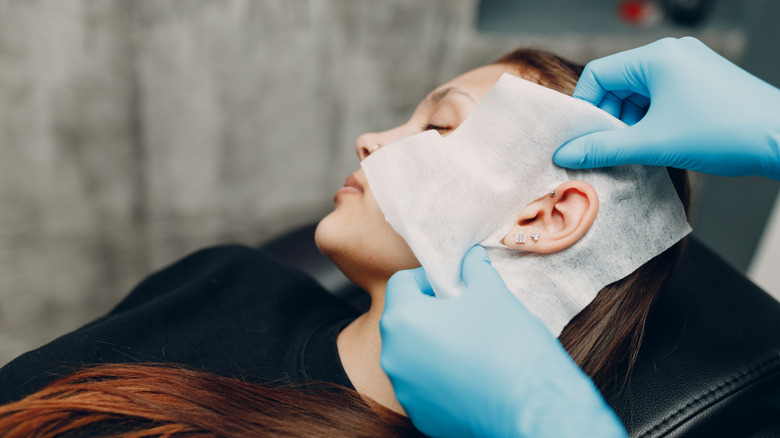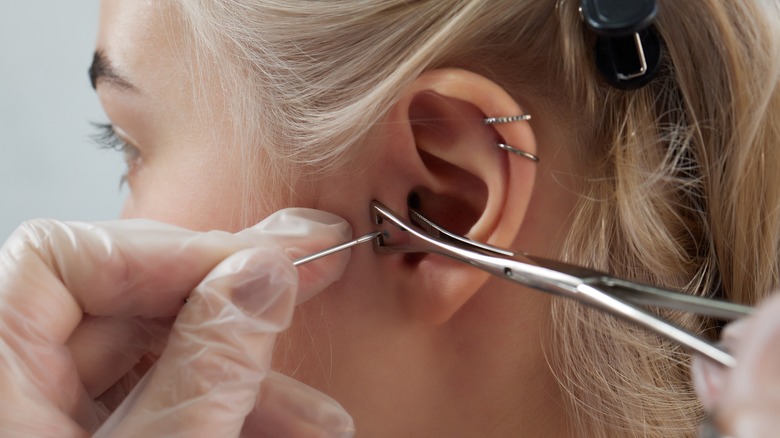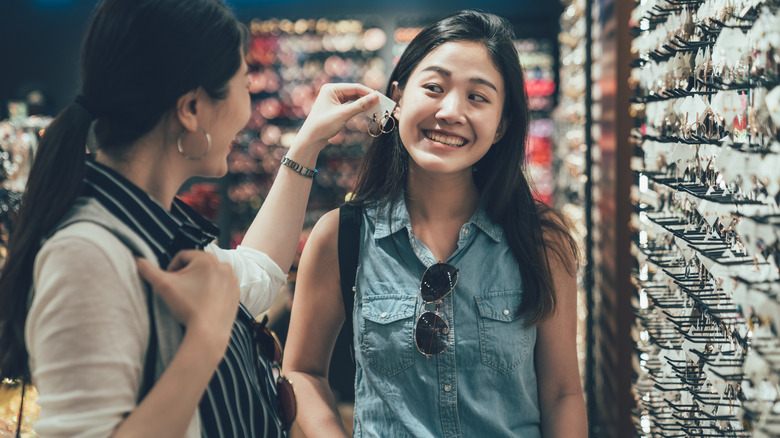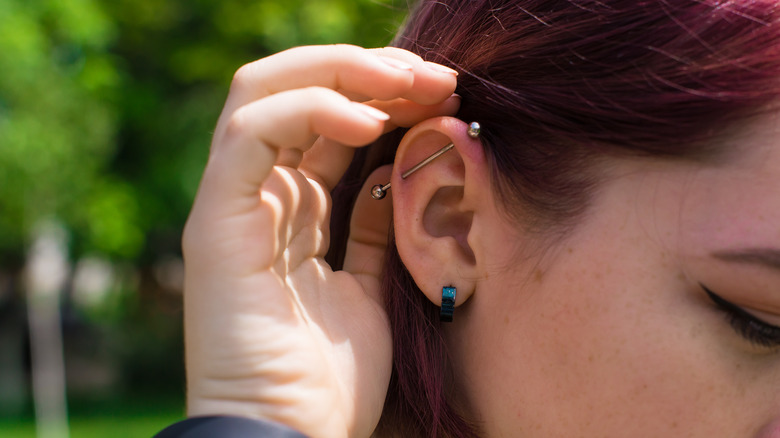An Expert Explains How To Avoid An Infected Ear Piercing Before It Starts
The phrase "the more the merrier” should have been made for ear piercings. From multi-piercing "ear parties" to ear piercings that do double duty as acupuncture points, there's no shortage of ear jewelry inspo. Whether you're planning your first puncture or your sixth, be prepared for a little downtime, as piercings can take between six weeks and a full year to heal, per WebMD.
However, an infection can derail the healing process and cause some seriously uncomfortable symptoms. According to the Cleveland Clinic, infections may lead to pain, inflammation, fever, discharge, and, in some severe cases, a systemic infection where bacteria spreads throughout the body — yikes! Your piercing hole may also close up after becoming infected, meaning you have to go back to square one and start all over.
To find out how to cut your chances of getting an infection, Glam spoke with the founder of Belgian tattoo studio Inksane and Inksane Piercing Sandy Verfaille. Here are her tips for safe and healthy ear piercings.
Don't DIY
Getting a piercing could be as quick and easy as heading to your local beauty supply store, picking up a piercing gun, and using it to puncture your ears at home. In the long run, though, this method often causes more harm than good. "Stay away from piercing guns," urges Verfaille. She explains that the butterfly-shaped jewelry backings used with piercing guns "have a lot of nooks and ridges, which are a breeding ground for bacteria that can end up in your fresh piercing wound and cause infections." Plus, the guns can't be properly sterilized, meaning you're exposing the piercing hole to bacteria.
Skip the DIY route and seek out a professional who doesn't rely on piercing guns. "Piercers will use a sharp and sterilized single-use needle," says Verfaille. "They also learn how to avoid cross-contamination and clean work before they can even start to pierce. [Professional] piercing jewelry with flat backs is polished and smooth so no bacteria can hide in there."
Choose earring materials carefully
Perhaps the most exciting part of getting a fresh piercing is experimenting with new hoops, dangles, and statement studs. But you might need to hold off on some earrings at first, depending on their material. Verfaille explains that certain types may be irritating to the skin, especially when worn soon after your piercing: "Do not get silver or chirurgical steel or black jewelry for your fresh piercing. Silver can oxidize, chirurgical steel contains nickel, and black jewelry is always painted which can cause chafes of paint to infect your fresh piercing."
Safer options, according to Verfaille, include implant-grade titanium, 14-karat gold, glass, or niobium. "These materials are safe to put in a fresh piercing because they do not contain nickel, they do not oxidize, and are not painted."
Before adorning your ears with new jewelry, inspect it to ensure it contains no paint and is made of piercing-friendly materials. Your piercing studio should have a variety of designs to choose from and can help you steer clear of jewelry that might cause irritation.
Practice proper aftercare
Arguably the hardest part of getting an ear piercing is sitting through the moment when the needle punches your skin. Still, just because you survived the toughest part doesn't mean your work is done. Aftercare is essential to keep your piercing clean and free of infection. Verfaille suggests rinsing your piercing with water once a day and using a saline solution for extra cleaning. "Do not use alcohol or oils, as these substances can irritate your piercing and infect it if you keep using it," she notes.
Verfaille also recommends avoiding baths and swimming pools until the piercing has healed, since the water could contain harmful bacteria. Another culprit for bacteria: your hands. "Wash your hand when you touch your piercing, but touch it as little as possible," says Verfaille. Touch the piercing area and jewelry only when cleaning them to avoid spreading bacteria as much as you can.



